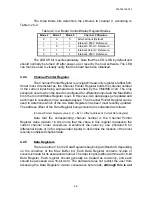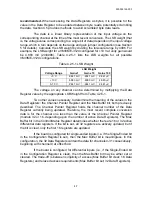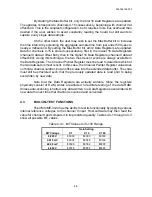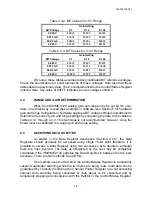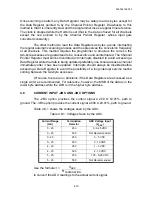
500-003124-000
3-1
SECTION 3
THEORY OF OPERATION
3.1
INTRODUCTION
The VMIVME-3124 is a flexible, low-cost analog input board that provides
16 differential or 32 single-ended analog input channels. The channels are scanned
continuously at an tartrate rate of 40 kHz using a 12-bit resolution Analog-to-Digital
Converter (ADC). Channels are randomly or sequentially read at any time. The current
address of the channel being digitized is read from the Channel Pointer Register.
Scanning is halted at the current channel using the Stop Auto Scan bit in the
Control/Status Register. This disables further channel address increments. The board
then locks onto that channel. This allows a single channel to be digitized every 25
sec.
The following sections discuss the functional components of the VMIVME-3124 in detail.
3.2
FUNCTIONAL ORGANIZATION
The VMIVME-3124 is divided into the following functional categories. Each
category will be discussed in detail.
a. VMEbus Interface
b. Analog-to-Digital Converter (ADC) and Control Logic
c. Analog Input Multiplexing, Gain and Conversion
d. BIT Voltage Reference and multiplexer
e. Board ID register
Figure 3.2-1 illustrates the functional blocks of the VMIVME-3124.
3.3
VMEbus INTERFACE
The VMIVME-3124 communications registers are memory mapped as 64 16-bit
words (128-bytes) in memory. The registers are contiguous and can located on any
128-byte boundary within the short I/O space of the VMEbus. The board can be
configured to respond to short supervisory or short nonprivileged data accesses, or both.
See Section 5 for address jumper locations and configurations.























